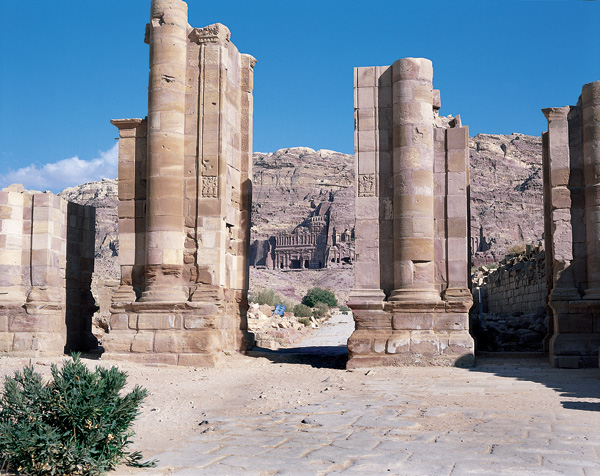Jordanian-U.S. Exhibit Tours North America

An idea sparked by a 1994 visit to Cincinnati by Jordan’s Queen Noor al-Hussein has resulted in Petra: Lost City of Stone—the first major cultural collaboration between Jordan and the United States. Organized by the Cincinnati Art Museum and the American Museum of Natural History in New York City, the exhibit features more than 200 artifacts from the 2,000-year-old Nabatean city.
Glenn Markoe, curator of Classical and Near Eastern Art at the Cincinnati Art Museum and co-curator of the Petra exhibition (along with Craig Morris of the American Museum of Natural History), told Archaeology Odyssey that the seeds of the exhibit were sown when Queen Noor viewed the famed statue of Atargatis/Tyche, the ancient Greek goddess of fortune, in the Cincinnati museum.
“After biblical archaeologist Nelson Glueck of Cincinnati excavated the hilltop sanctuary of Khirbet et-Tannur, north of Petra, in 1937,” Markoe said, “the finds were evenly divided between Glueck’s team and the Jordanian Department of Antiquities. A figure of Nike, or Winged Victory, originally supported the upper half of the statue of Atargatis/Tyche. The Nike portion of the statue had apparently been removed from the site before excavation got underway and eventually wound up in the Citadel Museum in Amman. The upper half of the statue, containing the bust of Atargatis/Tyche framed by signs of the zodiac, was shipped off to Cincinnati.” (The Cincinatti Art Museum had purchased the American share of the finds from Khirbet et-Tannur.)
Already a library member? Log in here.
Institution user? Log in with your IP address.

